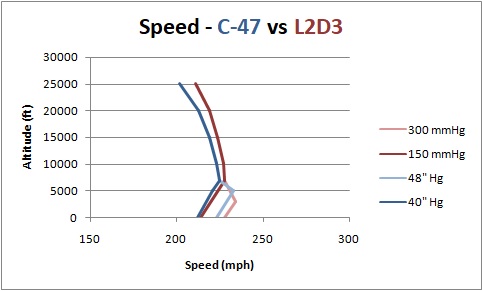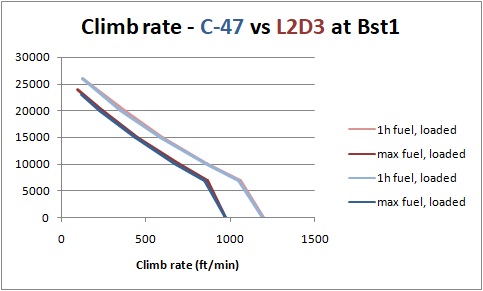
 This update is now live and ready for download!---== UPDATE FL2076: DROPPING THE 101st AIRBORNE ==---
This update is now live and ready for download!---== UPDATE FL2076: DROPPING THE 101st AIRBORNE ==---By: Robert, Grumpy, Bollok, Sleepy & Jabo
All made possible by: Bcamel (creator of the program used to model the airplanes), and Idunno (who has shared a vast amount of aerodynamical knowledge).
--= Douglas C-47 Skytrain/Dakota and Nakajima L2D3 "Tabby" =--We are happy to announce that the C-47 and L2D3 transports have been fully remodeled. They should now be closer to real life performance and will also have an updated Vehicle Information with performance numbers. See below for details.
--= Bombers hitpoints =--All medium/large bombers have had a 1.5x increase to their rudder hitpoints. These were previously set a bit to low.
--= Nose texture fixes =--The nose 3d textures have been missing for nearly half of the flightmodels, when viewed from inside the cockpit, for a long time. Also the Bf 110C-4 and other planes have been missing part of their wing 3d textures etc. This update brings cockpit view texture fixes for the:
F4U-1D, F4U-4, L2D3, Typhoon IB (1942), Typhoon IB (1944), Yak-3, Yak-9D, Yak-9U, Bf 110C-4 (wing texture fix only).
--= Various Corrections =--Spelling correction for one of the Ki-43 skins (Independent, not independant), also the B-24's are now correctly spelled "Consolidated" in the Vehicle information, not "Consilidated".
---== THE DOUGLAS C-47 SKYTRAIN/DAKOTA FULL REHAUL ==---The Douglas C-47 was the Army version of the DC-3. This version had improved engines and was a workhorse for the Allies and many other countries during WW2. It was of such a good design that it is still used as a cargo plane today. Thanks to the versatile C-47, the Allies could supply their forces with ammunition, food, fuel etc at all fronts. It even carried paratroopers deep behind enemy lines. The Dakota is powered by two R-1830-92 engines, producing 1050 hp at Normal rated power, and 1200 hp at Take off power. The engines are at their best up to 7000 ft, but the C-47 can reach a service ceiling of 26000 ft. This transport plane is easy to handle and the roll rate is quite slow, rolling at 15-20 deg/sec. The fuselage allows for 28 paratroopers to be carried, which makes this the ideal transport for trooping a series of fields. Even though this is a two engine airplane, the C-47 is almost as large as a B-24 bomber and can take quite some damage before going down. Firing into it's thick fuselage is not the best tactic, and a smart fighter pilot should aim for the Dakotas' exposed engines instead, or go for the cockpit in a head on. The C-47 is unarmed and needs to cooperate with escorts against enemy fighters.
---== THE NAKAJIMA/SHÔWA L2D3 "TABBY" FULL REHAUL ==---The Japanese were licensed to build their own version of the DC-3 before the hostilities broke out against the U.S. The Nakajima/Shôwa L2D2 was the civilian version, while the L2D3 was the improved Navy version. The Allied codename was "Tabby". The L2D's served in many roles and were used as both personal, cargo, and troop transports. The L2D3 had a shorter front fuselage and better engines than the original DC-3 version. It was powered by two Mitsubishi Kinsei 51/53 engines. These were slightly stronger than the ones used in the C-47, and were able to produce 1100 hp at Rated power, and 1300 hp at Take off power. The L2D3 is around 1140 lb heavier than the C-47 though, which somewhat evens out the power advantage. The "Tabby" pilot also has to be more mindful of the engine temperature when running the engines at high boost. Except for this the L2D3 is very similar to the C-47 in regards to handling, just being slightly more twitchy in the pitch due to the shorter nose, and the time to target is also quite similar for these two transports.


<S>
/Robert






